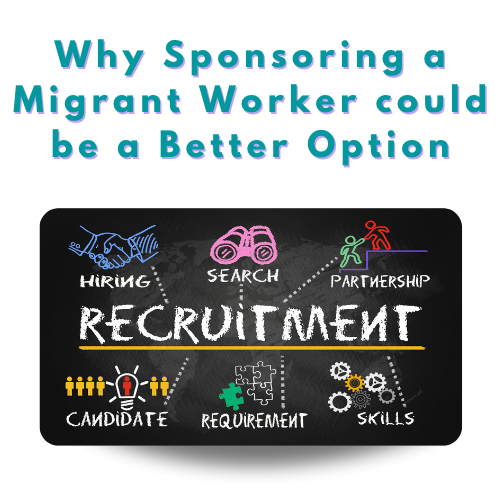
12 Feb The Rising Cost and Time of Hiring New Employees in Australia: Why Sponsoring a Migrant Worker could be a Better Option
Hiring new employees can be a time-consuming and expensive process in Australia. In recent years, the cost and time required to bring on a new hire have increased significantly, causing many businesses to re-evaluate their recruitment strategies. With a growing demand for skilled workers, the competition to attract and retain the best talent is becoming increasingly intense, and this is reflected in the rising cost and time associated with hiring new employees.
According to recent statistics, the cost of hiring a new employee in Australia can be up to $23,860, taking into account recruitment and selection costs, where it usually takes 40 days to fill a vacant position, onboarding and training, and wage costs. The process of hiring a new employee can also take several months, from the initial advertisement of the role to the final selection and onboarding process.
The comprehensive report by ELMO software, in partnership with the Australian HR Institute, found that the cost to hire a new employee has increased from the $10,500 seen in the 2020 survey and can be attributed primarily to the increased cost of hiring mid-level managers and mid-level individual contributors. In its 2022 Workplace Trends Report, Gartner suggested the role of mid-level managers has changed throughout the pandemic and is now more important than ever – but employers will need to salary match their competitors to hold onto these workers. Similarly, the 2021/22 Salary Guide by Hays found that more skilled professionals will find their knowledge and extensive skills in strong demand. 67% of the employers surveyed by Hays suggested they will increase salaries to retain employees.
One solution to the increasing cost and time of hiring new employees is to sponsor a migrant worker who will be able to work permanently for your business for 2-4 years (duration varies between occupations). This option provides businesses with access to a larger pool of skilled workers, including those from overseas, which can increase the chances of finding the right candidate for the role. Additionally, sponsoring a migrant worker can reduce the cost and time associated with the hiring process, as the process of obtaining a visa and sponsoring a worker is usually quicker and more cost effective than hiring a local employee, and it provides businesses with access to a larger pool of skilled workers, including those from overseas.
One of the key benefits of sponsoring a migrant worker is that it can help businesses to reduce their recruitment costs by hiring and locking them in the role for 2-4 years. According to a report by the Department of Home Affairs, the cost of recruiting and hiring a migrant worker can be up to 40% lower than the cost of recruiting and hiring a local worker. This is because the cost of obtaining a visa and sponsoring a worker is usually lower than the cost of advertising a job, conducting interviews, and onboarding a new hire. The sponsored migrant employee can only leave your business if (a) they find a new employer willing to pay the costs to transfer their nomination or (b) if they decide to return to their home country.
Another benefit of sponsoring a migrant worker is that it can help businesses to reduce their training costs. Many migrant workers come to Australia with the skills and experience necessary to perform their job, which can reduce the need for costly training programs.
In addition to reducing recruitment and training costs, sponsoring a migrant worker can also help businesses to reduce their wage costs. Many migrant workers are willing to accept lower salaries than local workers, which can help businesses to reduce their overall labour costs. This is especially important for businesses in industries that are facing a skills shortage, as it can help to reduce the pressure on wages and increase the competitiveness of the business.



No Comments